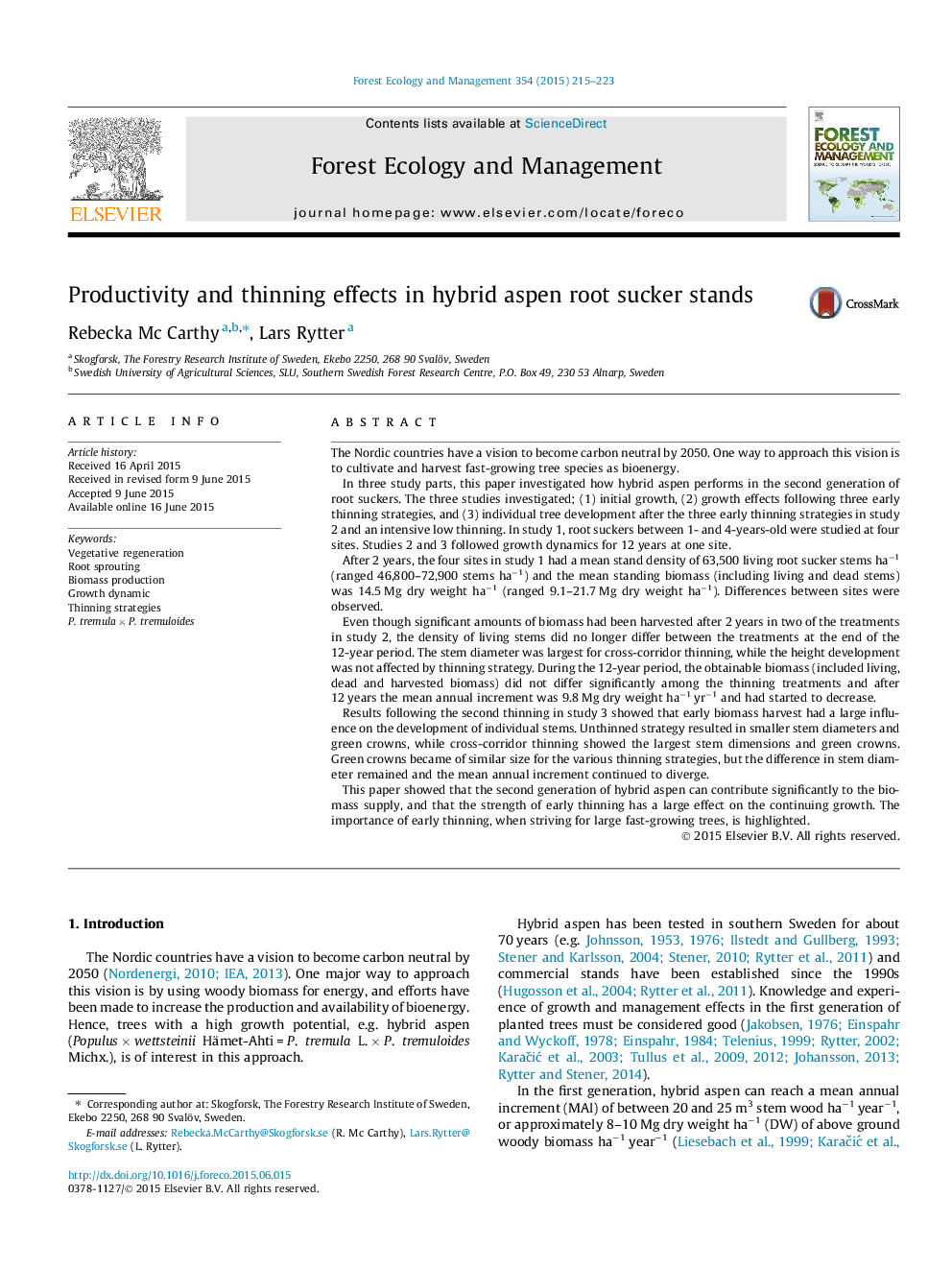| کد مقاله | کد نشریه | سال انتشار | مقاله انگلیسی | نسخه تمام متن |
|---|---|---|---|---|
| 86152 | 159168 | 2015 | 9 صفحه PDF | دانلود رایگان |
• Hybrid aspen root sucker stands have a high potential for early biomass production.
• Heavy self-thinning will appear in unthinned root sucker stands.
• An early thinning gives faster diameter development of dominant trees.
• An early strong first thinning gives higher productivity after a second thinning.
• Further thinnings are needed before crown competition reappears.
The Nordic countries have a vision to become carbon neutral by 2050. One way to approach this vision is to cultivate and harvest fast-growing tree species as bioenergy.In three study parts, this paper investigated how hybrid aspen performs in the second generation of root suckers. The three studies investigated; (1) initial growth, (2) growth effects following three early thinning strategies, and (3) individual tree development after the three early thinning strategies in study 2 and an intensive low thinning. In study 1, root suckers between 1- and 4-years-old were studied at four sites. Studies 2 and 3 followed growth dynamics for 12 years at one site.After 2 years, the four sites in study 1 had a mean stand density of 63,500 living root sucker stems ha−1 (ranged 46,800–72,900 stems ha−1) and the mean standing biomass (including living and dead stems) was 14.5 Mg dry weight ha−1 (ranged 9.1–21.7 Mg dry weight ha−1). Differences between sites were observed.Even though significant amounts of biomass had been harvested after 2 years in two of the treatments in study 2, the density of living stems did no longer differ between the treatments at the end of the 12-year period. The stem diameter was largest for cross-corridor thinning, while the height development was not affected by thinning strategy. During the 12-year period, the obtainable biomass (included living, dead and harvested biomass) did not differ significantly among the thinning treatments and after 12 years the mean annual increment was 9.8 Mg dry weight ha−1 yr−1 and had started to decrease.Results following the second thinning in study 3 showed that early biomass harvest had a large influence on the development of individual stems. Unthinned strategy resulted in smaller stem diameters and green crowns, while cross-corridor thinning showed the largest stem dimensions and green crowns. Green crowns became of similar size for the various thinning strategies, but the difference in stem diameter remained and the mean annual increment continued to diverge.This paper showed that the second generation of hybrid aspen can contribute significantly to the biomass supply, and that the strength of early thinning has a large effect on the continuing growth. The importance of early thinning, when striving for large fast-growing trees, is highlighted.
Journal: Forest Ecology and Management - Volume 354, 15 October 2015, Pages 215–223
